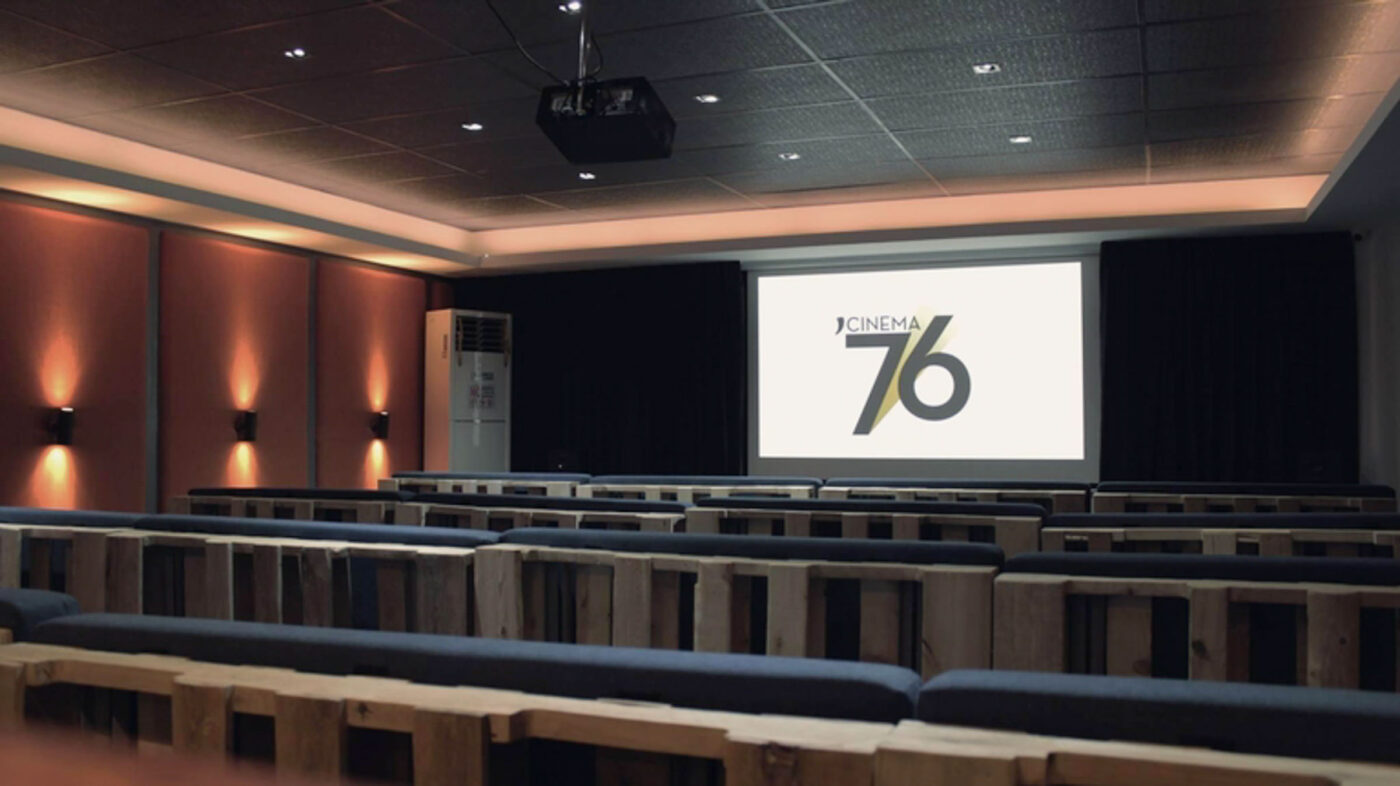The local indie film scene is beset with many issues and controversies. Just last August, there was an outrage over the Special Feature movies of the Pista ng Pelikulang Pilipino (PPP) 2018, namely Balangiga: Howling Wilderness and Gusto Kita with All My Hypothalamus, receiving a grade of zero from the Cinema Evaluation Board (CEB) despite having won the Filipino Academy of Movie Arts and Sciences Awards (FAMAS) 2017 Best Picture and Cine Filipino 2018 2nd Best Picture respectively.
In 2016, the Metro Manila Film Festival’s (MMFF) uncharacteristically indie-dominated lineup drew significantly less revenue of Php 373.3 million than that of previous year which hit Php 1B. The lineup also drew flak from MMFF mainstays, including TV personality Vic Sotto who expressed that the MMFF committee’s taste was different from that of the majority watching Filipino films: “Nirerespeto ko ‘yung mga pelikulang kasama sa festival ngayon gaya ng Ang Babae sa Septic Tank 2. Ako napanood ko ‘yung first noon… Pero sana man lang nagsama sila ng puwedeng panoorin ng bata.”
(I respect the films which are part of festivals nowadays like Ang Babae sa Septic Tank 2 (2016). I watched the first installment of that… But they should have included more family-friendly options.)
Still, there is a growing audience for local indie films driven mostly by increasing avenues from film festivals like Sinag Maynila Film Festival, QCinema International Film Festival, and Cinema One Originals to name a few. Although mall multiplexes would be hard-pressed to screen these films, the increasing demand for these movies has given rise to microcinemas—small-scale movie theaters for indie and niche films.
All for arts’ sake
Though there have been breakthrough indie movies such as Heneral Luna (2015), That Thing Called Tadhana (2014) and the top grossing Philippine indie film Kita Kita (2017), independent films often face challenges with marketing and sales leading to a low rate of commercial success. With a low budget for film promotion, independent filmmakers are usually limited to word-of-mouth, film festivals, and Internet-based promotion.
Independent film producer Jodi Nebrida reveals that to regain their investment, “Most indie films here get sold for distributions rights for, like, Netflix, Cinema One, iflix, hulu or Amazon Prime… Kasi if you rely on ticket sales, it gets very difficult to recuperate your investment, especially here in Manila where the market is very small compared to other places.”
With art cinema being a niche market, it is best to target the most appropriate market segments. In the context of microcinemas, filmmakers are able to find audiences that appreciate their work. These customer-centered businesses operate not only to make a profit, but also to promote films deserving the public’s attention.
Cinema ‘76 is one such microcinema founded by TBA Studios in 2016. It has two branches, one in San Juan and another in Anonas. It was launched in June 2018.
The San Juan branch has a 60-seater theater while Cinema ‘76 Anonas has two screening rooms: a 70-seater MP4 screening room and a 120-seater DCP cinema. The interiors of the movie theaters have an intimate feel due it its smaller venue space, and use couches instead of individual theater chairs. Leonel Miranda, Associate Vice President of Cinema ‘76, shares the “homey feel” was incorporated as part of their brand.
Miranda says that the mission of Cinema ‘76 is “to create a new theatrical distribution platform for filmmakers while at the same time further growing and developing the audience that would be receptive and supportive of Filipino films.” Inspired by the Golden Age of Philippine Cinema, classics are screened via retrospective programs and tributes to film legends.
Apart from being venue partners to most film festivals, they also show indie films which are unable to run for a full theatrical week due to poor ticket sales. When it comes to the process of film selection, Miranda reveals that “[they] just need to contact the filmmakers and discuss the deal,” giving priority to films “recognized by the award-giving bodies but are inaccessible to our local audience.”
Cinema ‘76 can show two to seven films in a day which will stay in the theaters for about two weeks. Their audience demographic are usually teenagers or young adults of ages 16-30 years old. In helping foster the growth of the local indie scene, Miranda mentions “enhancing the education and sophistication of today’s moviegoers, in particular the young people; the millennials.”
In marketing these films, “Cinema ‘76 also offers a lot of ‘gimmicks or pakulo’ for [them] to gather social media audiences.” Their creative and hip spiels or captions calling out to their “beshies” along with a poster or screenshot have all the makings of a viral post. They also schedule Meet & Greets with celebrity actors, and to cater to their target market which includes students, they also give discounted ticket rates.
The locations of these microcinemas are also key to their operation since both San Juan and Anonas are areas of high urbanity. Other examples include Cinematheque Centre Manila in Ermita, Cinema Centenario in Maginhawa, and Black Maria Cinema in Mandaluyong, which are relatively near schools, making film-viewing convenient for students.
The power of film
In contrast to multiplexes, these small-scale movie houses can screen a wider array of films regardless of their obscurity, unconventionality, or date of release. If you weren’t able to catch the MMFF, PPP or Cinemalaya films, microcinemas come as great opportunities to see them.
Apart from the chance to see these films with limited screenings, they are also places where national events and relevant social issues are recognized. The freedom to choose a variety of movies allows these cinemas to take a stance on socio-political issues, and this is one significant difference between microcinemas and multiplexes.
For instance, in celebration of National Heroes’ Day and Buwan ng Wika, Cinema ‘76 screened movies from PPP and CineFilipino 2018 which highlight patriotic values and Filipino culture. Likewise, Cinema Centenario hosted the Never Forget Film Festival in September to commemorate the atrocities committed during the Marcos dictatorship.
Cinema ‘76 also brought to light LGBT issues in the Philippines through their screening of queer-themed films during Pride Month in June. In March, Cinematheque Centre Manila celebrated Women’s Month through their Cine Juana Film Festival in March 2018.
But besides seasonal local film screenings, foreign cinema also takes the stage in these tiny theaters, especially in Cinematheque Centre Manila where they partner with different embassies and cultural institutions. They have screened Korean, Czech, and Danish films among others.
In comparison, big conglomerates of cinemas such as SM and Ayala provide quality theaters with about two to 12 screens. Besides the convenience of these malls, added amenities can include IMAX features, reclining or La-Z Boy chairs, and curved screens. Their movie line-up usually consists of recently released films which show great promise in terms of revenue.
Meanwhile, microcinemas enable a different film viewing experience with their set-up, indie film selection, and complementary events or workshops which are unavailable in mall cinemas. Not only that, they are free from censorship and can provide alternative exhibitors for filmmakers rather than the usual multiplexes. Additionally, the pressure to create commercially-inclined movies is lessened, encouraging the development of more artistic films.
However, it is apparent that the impact these handful of microcinemas can deliver today is limited. Nebrida shares, “Maybe if there were a hundred [microcinemas] in the country, the impact would be greater, but for now, there’s not much they can do.”
“They also have a different appeal to the masses. [The] impression of the majority of the people is that a microcinema is super artsy, super arthouse.” Nevertheless, they present an option and a future for the local indie scene that benefits both filmmakers and viewers.
Taking it beyond
Besides film screenings, these movie houses go a step further to enhance interest in filmmaking by conducting workshops, seminars, and forums. Aspiring filmmakers and actors are given a platform to hone their skills, while those who are established in the industry get a chance to engage with their audience.
Cine Adarna, for instance, is an 800-seat cinema operated by the UP Film Institute where apart from screening different films daily, they also organize a variety of film-related events. In 2018, they held workshop series on Digital Video Production, Film Acting and Basic Screenwriting for a fee ranging from Php 6,000 to Php 8,000.
Besides honing film practitioners, other microcinemas such as Cinema Centenario conduct Q&A forums with production crew or cast members of the films. These bridge the gap between movie makers and the audience to get them immersed with the processes and the context of the film.
Those in attendance discuss Philippine culture, values, and history embedded within the film. These events are also avenues for extra publicity. Recently, Cinema ‘76 Film Society had actor Paulo Avelino in the ticket booth for the movie Goyo: Ang Batang Heneral (2018) which brought fans to the micro theater to take selfies with the actor.
Aside from that, new avenues for artistic learning include screening films microcinema-style. For one, the Areté, the Ateneo’s creative hub, is hosting Cine Areté from September to October. In partnership with the Loyola Film Circle (LFC) and Pinoy Indie Films Road Show, the Areté will be screening Cinemalaya films followed by open forums.
LFC President Diana Mendoza, hopes that “by bringing [Cinemalaya] closer to home, or the campus rather, we reconnect the films to an eager audience: the student body.” The past film showings of LFC reveals that “constraints in terms of accessibility are why Ateneans usually want to watch,” whether it be transportation problems or limited distribution.
While Ateneo has had movie screenings before, “[it has] upgraded from screenings at lecture halls to Areté,” thus “[highlighting] the importance of the venue as well, and [emphasizing] that these films are, like Areté’s gallery pieces, artforms”.
More and more avenues for fostering the local film scene have sprouted as the demand for independent films continues to surge. And though their theaters may be tiny, the future of indie films looms large over Philippine entertainment.







